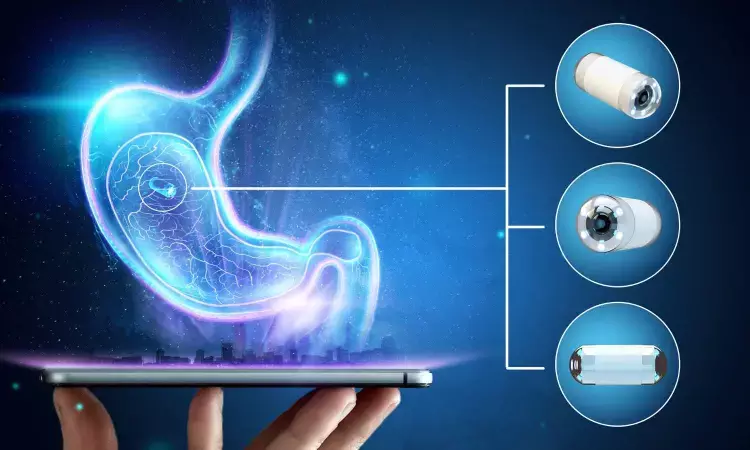- Home
- Medical news & Guidelines
- Anesthesiology
- Cardiology and CTVS
- Critical Care
- Dentistry
- Dermatology
- Diabetes and Endocrinology
- ENT
- Gastroenterology
- Medicine
- Nephrology
- Neurology
- Obstretics-Gynaecology
- Oncology
- Ophthalmology
- Orthopaedics
- Pediatrics-Neonatology
- Psychiatry
- Pulmonology
- Radiology
- Surgery
- Urology
- Laboratory Medicine
- Diet
- Nursing
- Paramedical
- Physiotherapy
- Health news
- Fact Check
- Bone Health Fact Check
- Brain Health Fact Check
- Cancer Related Fact Check
- Child Care Fact Check
- Dental and oral health fact check
- Diabetes and metabolic health fact check
- Diet and Nutrition Fact Check
- Eye and ENT Care Fact Check
- Fitness fact check
- Gut health fact check
- Heart health fact check
- Kidney health fact check
- Medical education fact check
- Men's health fact check
- Respiratory fact check
- Skin and hair care fact check
- Vaccine and Immunization fact check
- Women's health fact check
- AYUSH
- State News
- Andaman and Nicobar Islands
- Andhra Pradesh
- Arunachal Pradesh
- Assam
- Bihar
- Chandigarh
- Chattisgarh
- Dadra and Nagar Haveli
- Daman and Diu
- Delhi
- Goa
- Gujarat
- Haryana
- Himachal Pradesh
- Jammu & Kashmir
- Jharkhand
- Karnataka
- Kerala
- Ladakh
- Lakshadweep
- Madhya Pradesh
- Maharashtra
- Manipur
- Meghalaya
- Mizoram
- Nagaland
- Odisha
- Puducherry
- Punjab
- Rajasthan
- Sikkim
- Tamil Nadu
- Telangana
- Tripura
- Uttar Pradesh
- Uttrakhand
- West Bengal
- Medical Education
- Industry
A vibrating ingestible device to help treat obesity, find researchers

The obesity epidemic, affecting nearly 42% of US adults (1, 2), increasingly strains healthcare resources by increasing the incidence of comorbidities such as diabetes, hypertension, cancer, and heart disease
Effective therapies for obesity require invasive surgical and endoscopic interventions or high patient adherence, making it challenging for patients with obesity to effectively manage their disease.
Gastric mechanoreceptors sense distension of the stomach and perform volume-dependent vagal signaling to initiate the gastric phase and influence satiety. A new study in Science Advances reports an ingestible electronic vibrator created a euphoric state of fullness and caused less intake of food helping in treating obesity.
Vagal nerve signaling plays a critical role in satiation through a negative feedback loop in which anorexigenic neurometabolic secretions are released in response to food intake Distension of the stomach by food contents is transduced by intraganglionic laminar endings (IGLEs), the most prevalent type of vagal afferents innervating the gastric musculature, which sense contraction and distension
In this study, researchers developed a new luminal stimulation modality to specifically activate these gastric stretch receptors to elicit a vagal afferent response commensurate with mechanical distension. They designed the Vibrating Ingestible BioElectronic Stimulator (VIBES) pill, an ingestible device that performs luminal vibratory stimulation to activate mechanoreceptors and stroke mucosal receptors, which induces serotonin release and yields a hormonal metabolic response commensurate with a fed state.
Researchers evaluated VIBES across 108 meals in swine which consistently led to diminished food intake (~40%, P < 0.0001) and minimized the weight gain rate (P < 0.05) as compared to untreated controls. Application of mechanoreceptor biology could transform our capacity to help patients suffering from nutritional disorders.
Reference:
Shriya S. Srinivasan et al. ,A vibrating ingestible bioelectronic stimulator modulates gastric stretch receptors for illusory satiety.Sci. Adv.9,eadj3003(2023).DOI:10.1126/sciadv.adj3003.
MSc. Neuroscience
Niveditha Subramani a MSc. Neuroscience (Faculty of Medicine) graduate from University of Madras, Chennai. Ambitious in Neuro research having worked in motor diseases and neuron apoptosis is interested in more of new upcoming research and their advancement in field of medicine. She has an engrossed skill towards writing and her roles at Medical dialogue include Sr. Content writer. Her news covers new discoveries and updates in field of medicine. She can be reached at editorial@medicaldialogues.in
Dr Kamal Kant Kohli-MBBS, DTCD- a chest specialist with more than 30 years of practice and a flair for writing clinical articles, Dr Kamal Kant Kohli joined Medical Dialogues as a Chief Editor of Medical News. Besides writing articles, as an editor, he proofreads and verifies all the medical content published on Medical Dialogues including those coming from journals, studies,medical conferences,guidelines etc. Email: drkohli@medicaldialogues.in. Contact no. 011-43720751


